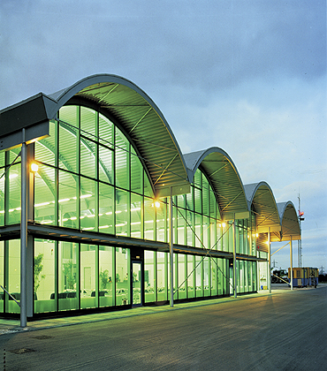
The Advantages of Laminated Glass in Architectural Applications
When it comes to choosing the right glass for your home or commercial building, laminated glass stands out as a superior option that offers numerous advantages over traditional single-pane or even standard double-pane glass. This innovative glazing solution has become increasingly popular among architects, builders, and homeowners who prioritize safety, security, and performance.
What is Laminated Glass?
Laminated glass from Chablais consists of two or more glass panes bonded together with a tough, transparent interlayer—typically made from polyvinyl butyral (PVB) or ethylene-vinyl acetate (EVA). This construction creates a single, unified sheet that maintains its integrity even when damaged, making it fundamentally different from ordinary glass.
Enhanced Safety and Security
The most compelling advantage of laminated glass is its exceptional safety profile. When broken, the glass fragments remain adhered to the interlayer rather than shattering into dangerous shards. This characteristic makes laminated glass ideal for:
-
- Overhead applications like skylights and glass roofs
- Large windows in homes and commercial buildings
- Storefront glazing in retail environments
- Balcony railings and structural glass elements
The security benefits extend beyond accident prevention. Laminated glass is significantly more difficult to break through than standard glass, making it an effective deterrent against break-ins and vandalism. Even when damaged, the interlayer holds the glass together, creating a barrier that’s challenging to penetrate.
Superior Sound Control
Urban noise pollution is a growing concern, and laminated glass provides an excellent solution. The interlayer acts as a sound dampener, reducing noise transmission by up to 50% compared to standard glass. This makes laminated glass particularly valuable for:
-
- Buildings near busy roads or airports
- Recording studios and conference rooms
- Residential areas in noisy neighborhoods
- Hotels and healthcare facilities where quiet environments are essential
UV Protection Benefits
The interlayer in laminated glass blocks up to 99% of harmful ultraviolet rays without affecting visible light transmission. This protection offers multiple benefits:
-
- Prevents fading of furniture, carpets, artwork, and fabrics
- Reduces skin cancer risk from prolonged sun exposure indoors
- Maintains interior comfort by reducing heat buildup
- Preserves property value by protecting interior investments
Weather Resistance and Durability
Laminated glass performs exceptionally well in extreme weather conditions. It can withstand:
-
- High winds and storm conditions better than standard glass
- Hail damage with minimal impact on structural integrity
- Temperature fluctuations without compromising performance
- Seismic activity due to its flexible interlayer construction
This durability translates to lower maintenance costs and longer replacement intervals, making it a cost-effective long-term investment.
Energy Efficiency Advantages
Modern laminated glass can incorporate low-emissivity (Low-E) coatings and other energy-efficient technologies. These features help:
-
- Reduce heating and cooling costs by improving insulation
- Minimize solar heat gain during summer months
- Maintain consistent indoor temperatures year-round
- Contribute to green building certifications and sustainability goals
Versatile Design Options
Laminated glass doesn’t compromise on aesthetics. It’s available in various configurations:
-
- Clear or tinted options for different visual effects
- Decorative interlayers with colors, patterns, or embedded materials
- Curved and shaped applications for architectural creativity
- Different thicknesses to meet specific structural requirements
Code Compliance and Standards
Many building codes now require or recommend laminated glass in specific applications, particularly for:
-
- Hurricane-prone regions (impact-resistant glazing)
- High-rise buildings above certain heights
- Schools and public buildings for safety compliance
- Areas with stringent energy efficiency requirements
Cost Considerations
While laminated glass typically costs more upfront than standard glass, the investment pays dividends through:
-
- Reduced insurance premiums due to enhanced security
- Lower energy bills from improved efficiency
- Decreased replacement costs due to durability
- Increased property value and marketability
Making the Right Choice
Laminated glass represents a smart investment for anyone prioritizing safety, security, comfort, and long-term value. Whether you’re building new construction, renovating existing structures, or simply upgrading windows, laminated glass offers a compelling combination of benefits that standard glass simply cannot match.
The technology continues to evolve, with new interlayer materials and manufacturing techniques expanding the possibilities for laminated glass applications. As building standards become more stringent and energy efficiency becomes increasingly important, laminated glass is positioned to become the standard rather than the exception in modern construction.
For homeowners and commercial property owners alike, choosing laminated glass means choosing peace of mind, enhanced comfort, and a safer environment for years to come.
Ready to explore laminated glass possibilities for your project?
Contact our design specialists to discuss custom options and see how this premium Chablais glass can enhance your home’s architecture and value.
